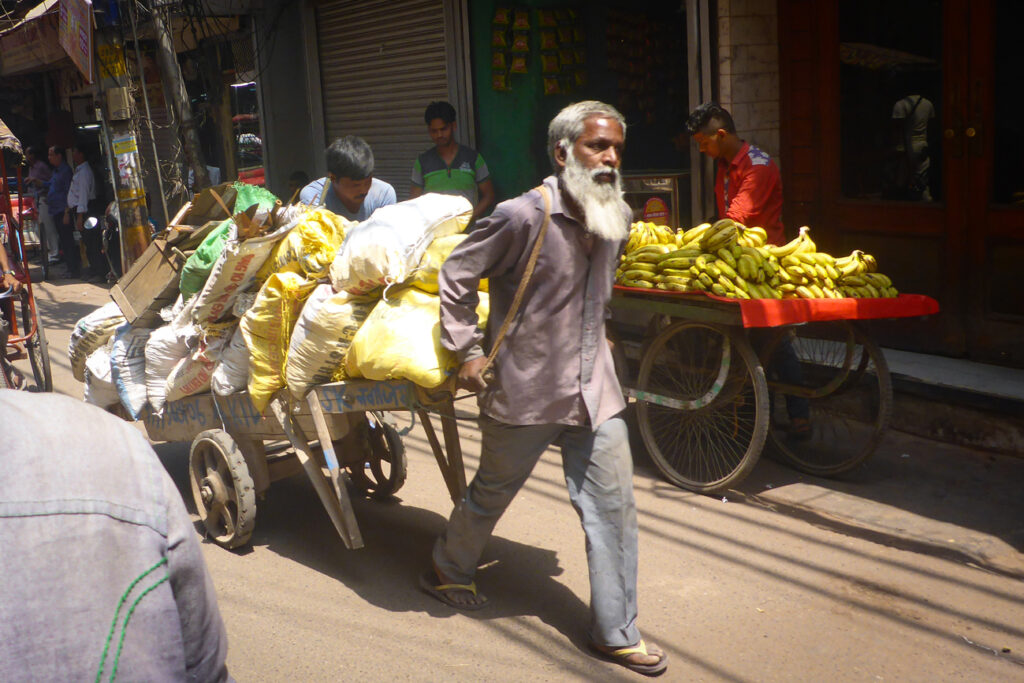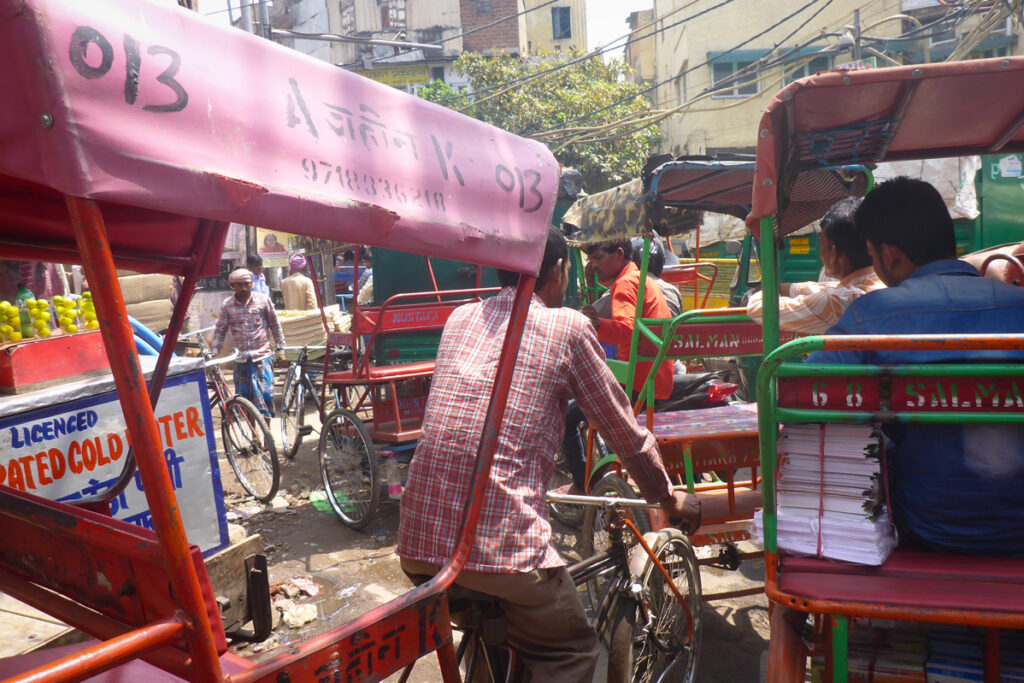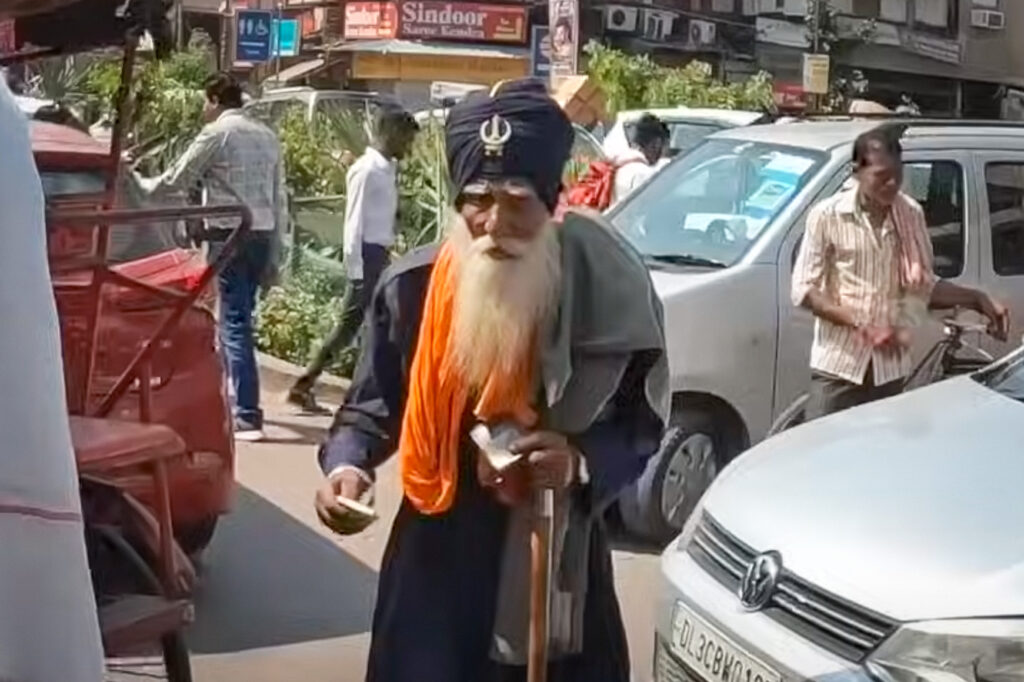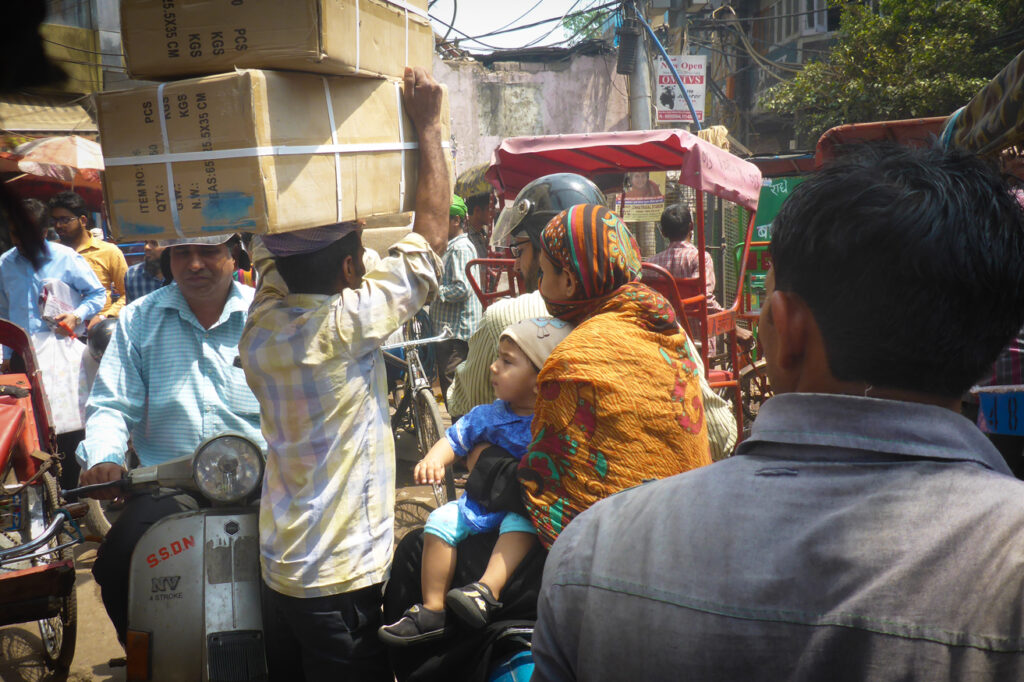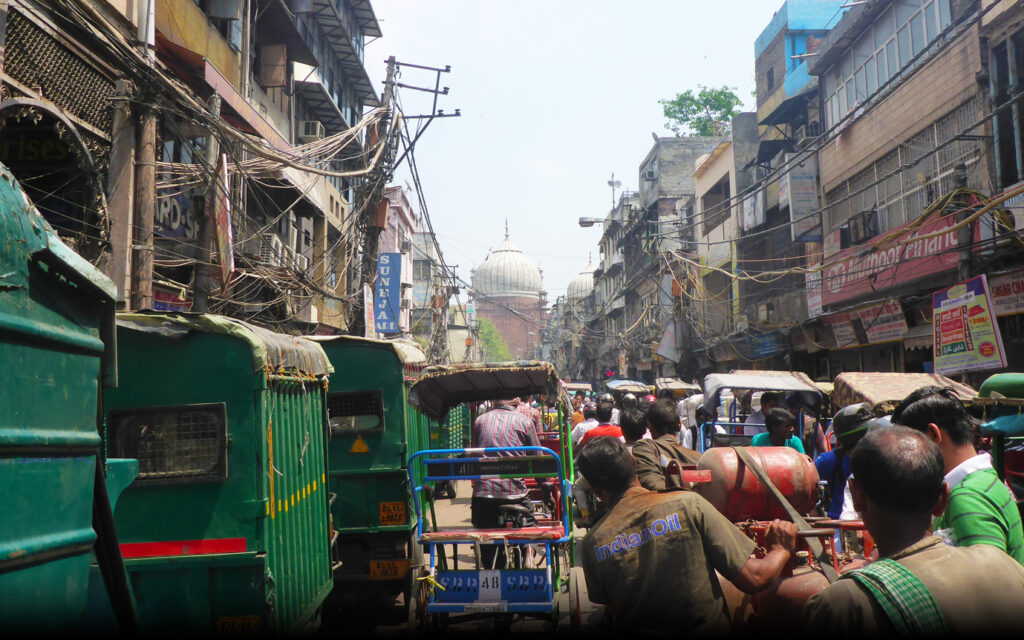
AS our Air India plane made its descent, I watched the outside air temperature read-out slowly rise. At around 12,000 feet, it came above zero degrees celsius, then started to climb—through the teens, twenties, into the thirties. The time was 9 pm. The temperature in Delhi was 37 degrees.
Indira Gandhi International Airport is the largest aviation hub in India and South-East Asia, set to handle 100 million annual passengers by 2030. We’d expected wall to wall people. In fact, the airport was near deserted. We rode the empty travelators to their vanishing points, saluting occasional fellow passengers from AI301 like old friends.
The immigration officer at the e-Tourist Visa counter scanned our fingerprints. He did his best bureaucrat imitation, but in the end his Indian sense of the ridiculous got the better of him and we all had a good laugh. He stamped and signed the e-visas into our passports and waved us through. We were in India.

Three metres farther and another man wanted to scrutinise our visas, and six metres beyond that another. Better keep our passports at the ready, in case all 1.5 billion subcontinent inhabitants want to see our visa stamps. Grabbing our bags from the carousel, we moved off anxiously. Amid the probable crush of meet-and-greeters outside the doors, locating our driver from TSI Holidays will be a struggle. What if he fails to show? What if we are alone in India’s hungry belly?
And sure enough—he wasn’t there. The crush of meet-and-greeters was four sleepy men leaning on a rail. The men bore signs, but none was for us. All is lost, we decided. What to do? In despair, I asked the most wakeful of the sleepy men.
‘Not allowed,’ he answered. ‘Is waiting outside. Not allowed here. Outside . . .’ He flung an arm in the direction of yet another set of doors that we hadn’t noticed. There were two outsides?
Hope reviving, we exited doors a second time and, to prove it wasn’t a dream, a wave of palpable heat struck us. This was India’s real outside. It felt real. It smelt real. And there stood a pleasant man in pressed white uniform, supporting a sign that read, ‘Adrian Bell x 02 Pax’. We rushed thankfully towards him. Like the meeting of a family in heaven. He hung welcome garlands of gold marigolds round our necks. His name was Vinod Kumar, and he was to be our driver for the next twelve days.

In India, lines on a road surface that we in the west fondly think of as marking lanes—discreet zones for vehicles to run in—mean something different. They mean you are on a road. A carriageway of 4 lanes in one direction, such as the road from IGI into Delhi, allows for 8 or 9 vehicles plus a cow and two pedestrians to travel abreast. Only one vehicle at a time is permitted to travel in the wrong direction, although many go in the wrong direction along the verge. You may pass a vehicle, providing one wing mirror slips over the top of the other.
We asked Vinod was the traffic always this bad late in the evening?
‘Rush hour, sir, ma’am,’ he said.
‘Now?’
‘They are going home, sir.’
For the past five hours? Was that the daily commute time, we wondered, as a couple of cows and a camel ploddingly overtook us? First rule of driving in India: keep moving. Do NOT stop, no matter what. Give way to absolutely no one, unless he or she is a cow. Cows have right of way regardless. You may blow your horn at anyone anytime—including cows, who are not required to take notice.
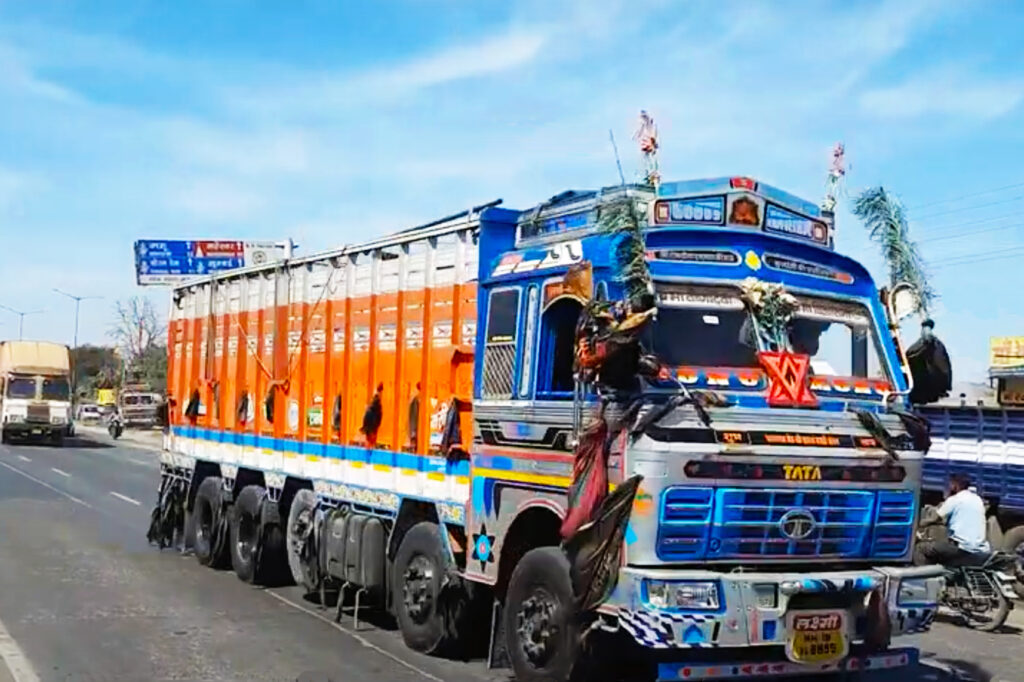
‘Three things the driver is needing,’ Vinod informed us, with a nod in the rear-view mirror: ‘good brakes, good horn, good luck.’ By and large, Indian people are affable and friendly. You find yourself getting close to them remarkably quickly—which can be worrying if their vehicle is going the opposite direction.
Right of way on Indian roads works on the principle: ‘When you’ve got nothing, you’ve got nothing to lose.’ It belongs to the driver with least to lose. Nose first wins. The rule at roundabouts is the same as for winter swimming. Don’t pussyfoot. Lay on the horn and dive in. Even at a standstill, the horn is your best friend. Horns blew non-stop on our journey. A continuous conversation of horns, from the rubber-duck squeaks of the scooters to the basso-profundo of the thunderous trucks.
‘The horn is saying “Excuse me,”‘ Vinod explained.
HORN PLEASE entreat the rear bumpers on the gypsy-like, richly painted trucks, rumbling along like multi-dimensional Fabergé eggs. The trucks are their drivers’ homes from home, bright as circus wagons, rolling harvests of memorabilia. Drivers call them wives, companions, family on the road. They are cornucopias, horns of plenty, lumbering epitomes of Indian exuberance and wisdom. One truck we drove behind read: जब तक यह आपके पास है, तब तक इसे प्यार करें, which translates ‘Love it, while you have it.’
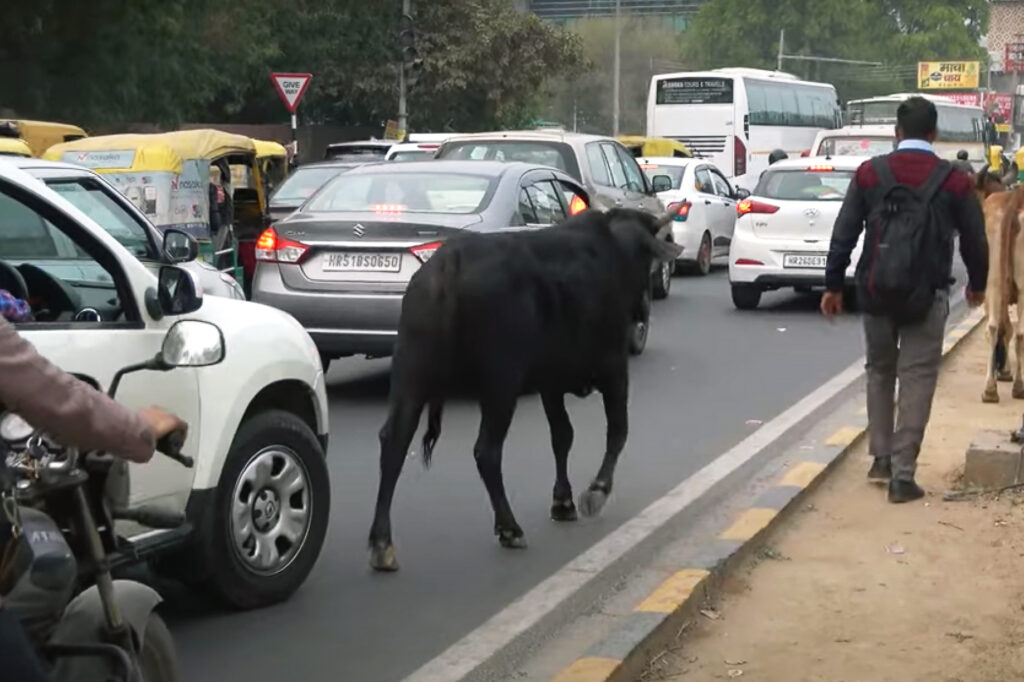
Eventually that night we made it to the floodlit gates of the Suryaa Hotel in downtown New Delhi. The hotel was like a secure compound. A guard looked under the hood before letting us pass. Once inside, we were frisk searched, and our baggage scanned. It was the first of three stays at the Suryaa, and the hotel soon started to feel like home.
Next morning, we looked out and saw black kites wheeling, searching for prey against the silky pink and grey backcloth of Delhi dawn. Sky celestial pink. Air scrubbed free of fumes, leaving it smelling earthy, sweet—a heady concoction of honeysuckle, incense, garbage and sewage. Tree-lined streets flushed with bright bursts of blood-red flowers, the sidewalks flushed with bright splatters of blood-red spit, emitted from the blackened mouths of betel nut chewers.
Those first days in India we used bottled water to brush our teeth. Everybody had warned: ‘You’ll get sick inside a week.’ ‘Dhal in, dhal out.’ ‘Getting on a bus, I had to squat right there and do it on the ground.’ ‘People drink from water that has dead bodies floating in it.’ ‘You’ll get raped.’
But India realised no such fears. Quite the opposite. The Indian devil-may-care worldview kept quietly poking fun at Western worries. In the Christian West, people visit churches and cathedrals to forget the world. Church windows tint corporeal light to turn it heavenly. There is outside and there is in. Churches perfectly represent soul-body dualism. Pure or sinful. Good or evil. Sick or well. Churches offer souls sanctuary against the perils of occupying a body. Western health care does much the same.
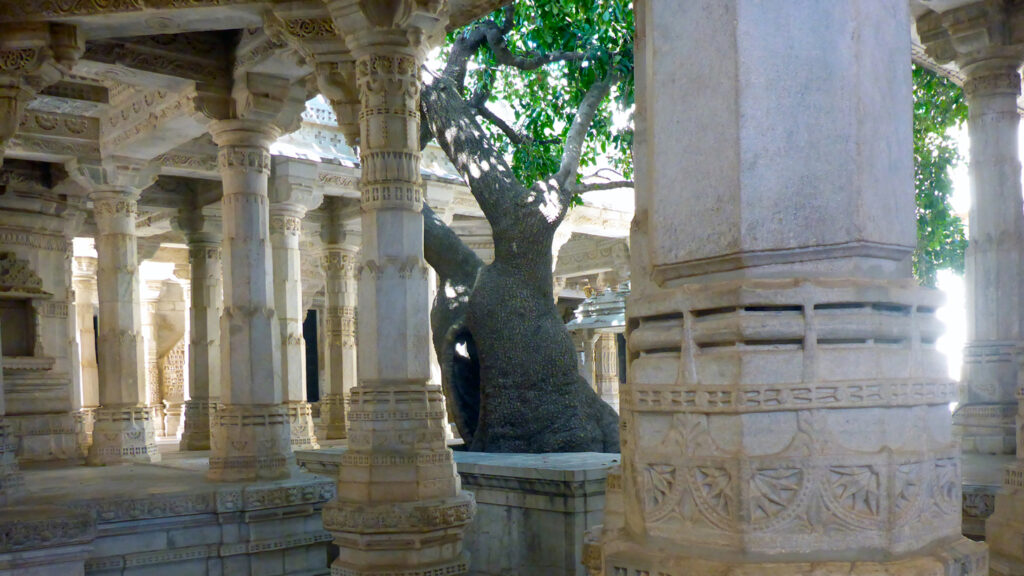
In contrast, consider the Jain Temple at Ranakpur, Rajasthan. It is open to the sky. Stray dogs wander in and out. Outside is in. Inside is out. The elephantine trunk of a 600 year-old tree relaxes against the marble, the sinewy, sprouting boughs as much part of the temple’s architecture as the forest of intricately carved interior pillars that the Rajasthani wind likes to waltz with. No glass, stained or otherwise, inhibits the bleaching sunlight. Jains practise ahimsa—avoidance of harm to all living things. Ahimsa extends to the humblest of creatures which is why a Jain when walking may sweep the ground ahead to avoid stepping on even an ant. Monkeys, mosquitoes, bacteria, poisonous snakes—all are welcome in the Ranakpur Jain temple.
There’s no forgetting the world in India. Many people’s houses have no walls. You find yourself wondering if a building is half-built or half-demolished. But India’s poverty is an abyss spanned by the population’s generosity. Souls in India are old, and suffering has endowed the people with genial good humour. A skinny milk-laden sow eats from an open sewer, cows ride the buses, monkeys ride the Delhi metro, termites eat the money in banks, camels fill up alongside petrol pumps, and lane markings on roads are as meaningful as knots in carpet.
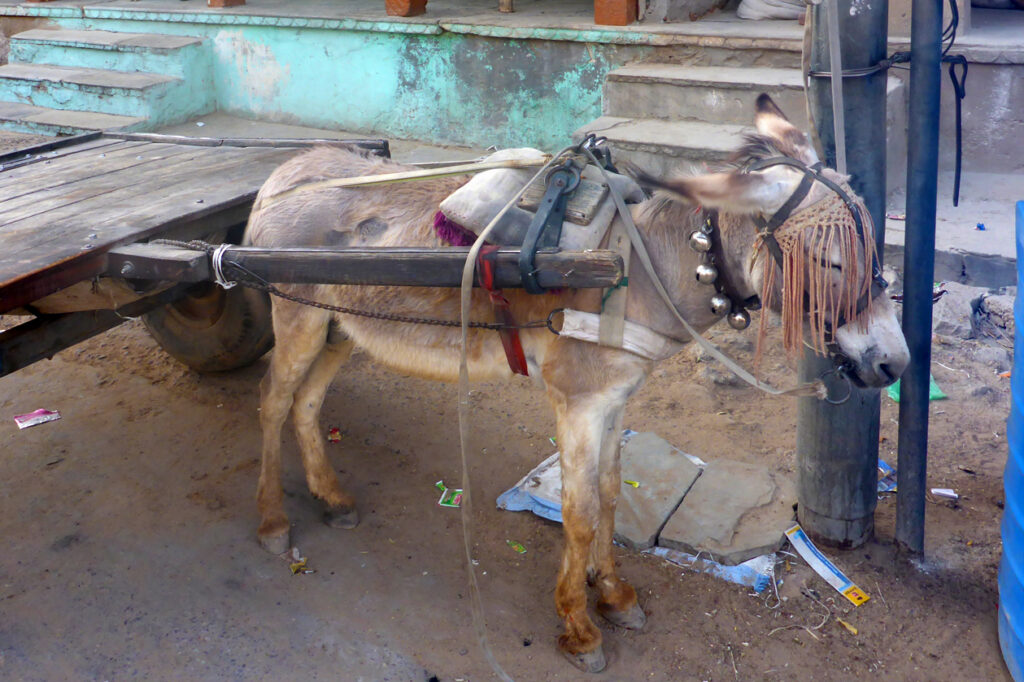
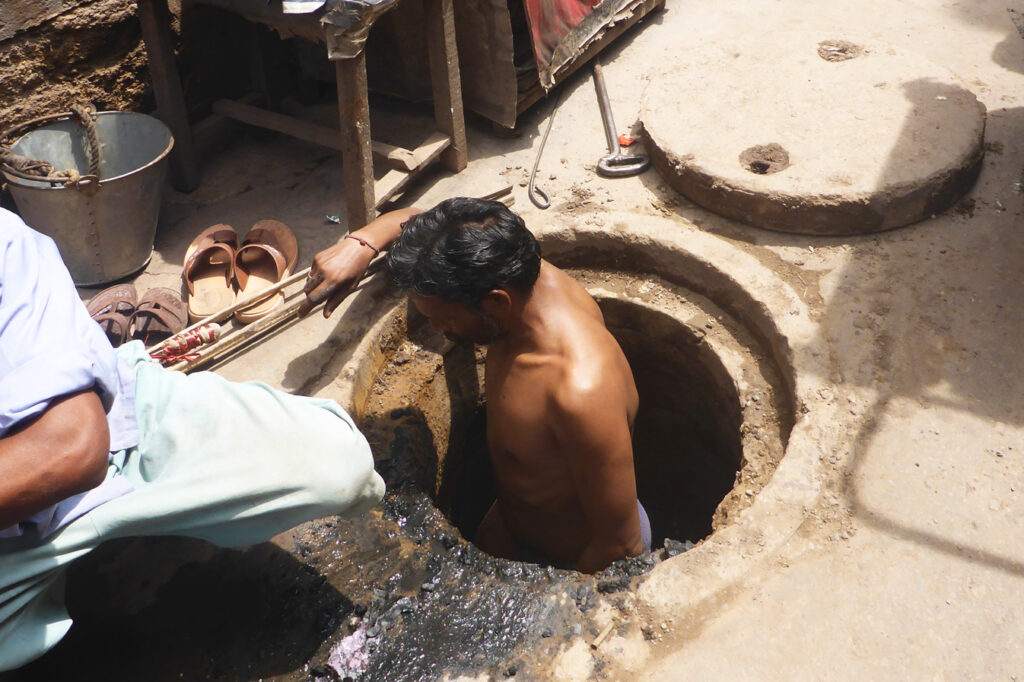


There is no inside-outside split in India. The distinction has no reality. A woman uses a straw besom to sweep the dust in the street. Buses carry as many passengers on their roofs as inside. Trees shade lines of sleepers on camp beds from the fierce midday sun. A mother feeds the baby at her breast while humping rocks at a roadworks. A man squats in the gutter, lathering his hair with shampoo. Others wash and brush their teeth under water spilling from a black plastic pipe. The world and everyone in it takes a shower when the monsoon rains come. Life feels at once time-worn and temporary. Houses house bodies the way bodies house souls—wayfarers in an impermanent world, subject to hazard, a world where nothing is certain and destiny inescapable. The world of karma.
‘Everything is determined, the beginning as well as the end, by forces over which we have no control. It is determined for the insect as well as for the star. Human beings, vegetables or cosmic dust, we all dance to a mysterious tune, intoned in the distance by an invisible player.‘ (‘Einstein at Home’, American Magazine, June 1930)
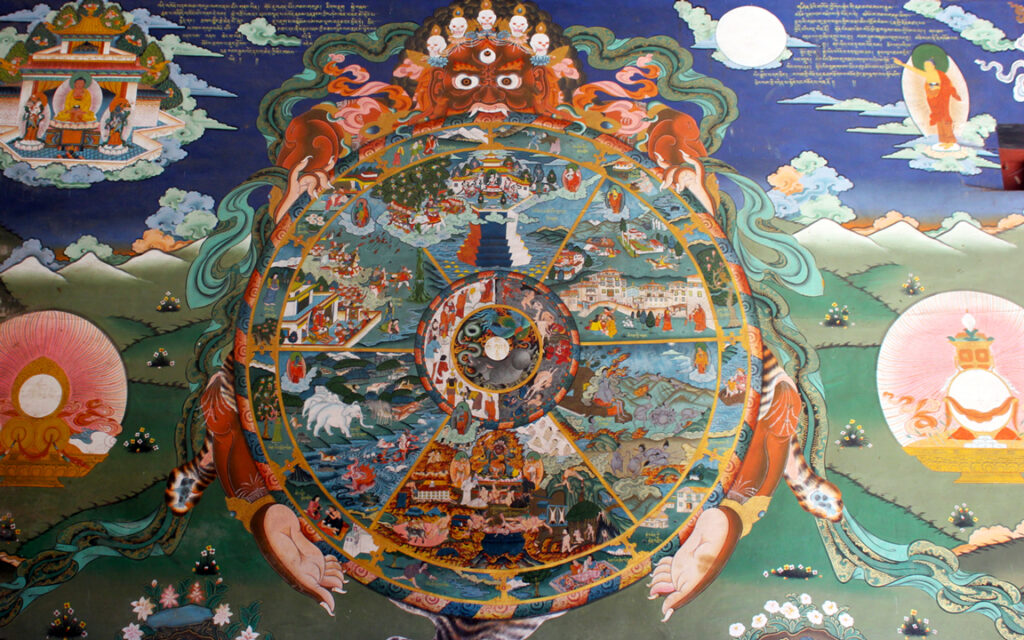
The best we can do in life is swim with the current rather than try to resist it. But the current in which many of India’s people swim is very strong. Life is hard and a discriminatory caste system still makes it harder. Most people belong to one of four castes—priests, soldiers, merchants and labourers. But excluded from these four are the Dalits or untouchables. The lowly Dalits are expected to do the dirty jobs that the rest of the social hierarchy won’t do—butchers, menial workers, leather workers, scavengers, latrine cleaners, street sweepers. In the past Brahmins (members of the priest caste) felt unclean enough if a Dalit’s shadow fell on them to have to take a bath. Dalits were forbidden to draw water from the same wells as the upper castes. Dalits who challenged the system were beaten and punished.
The mistreatment of the Dalits partly stems from the religious idea of karma. Karma basically means reaping what you sow. Good deeds yield good karma, bad deeds produce bad. But another religious idea goes hand in hand with karma: saṃsāra, the cycle of rebirth.
Saṃsāra implies that much of the karmic scorekeeping went on during previous lifetimes. Those past actions gave rise to you in this incarnation experiencing yourself as a saint or a murderer, a dog, a bat, a fruit fly, a hungry ghost, or a Dalit. Saṃsāra seems a possibility. As the arch-rationalist Voltaire observed: ‘It is not more surprising to be born twice than once; everything in nature is resurrection.’ But karma is another layer of retribution or reward that seems far less likely to be real. It puts a kind of dubious ethical spin on saṃsāra. It’s a way to answer the old chestnut: why is there evil in the world? Karma says you don’t have to worry, because there’s a neat system of poetic justice that will fit the pieces of the universe perfectly in place. What looks like chaos is order after all. People get what they deserve. Mistreating Dalits is just doing your cosmic bit.
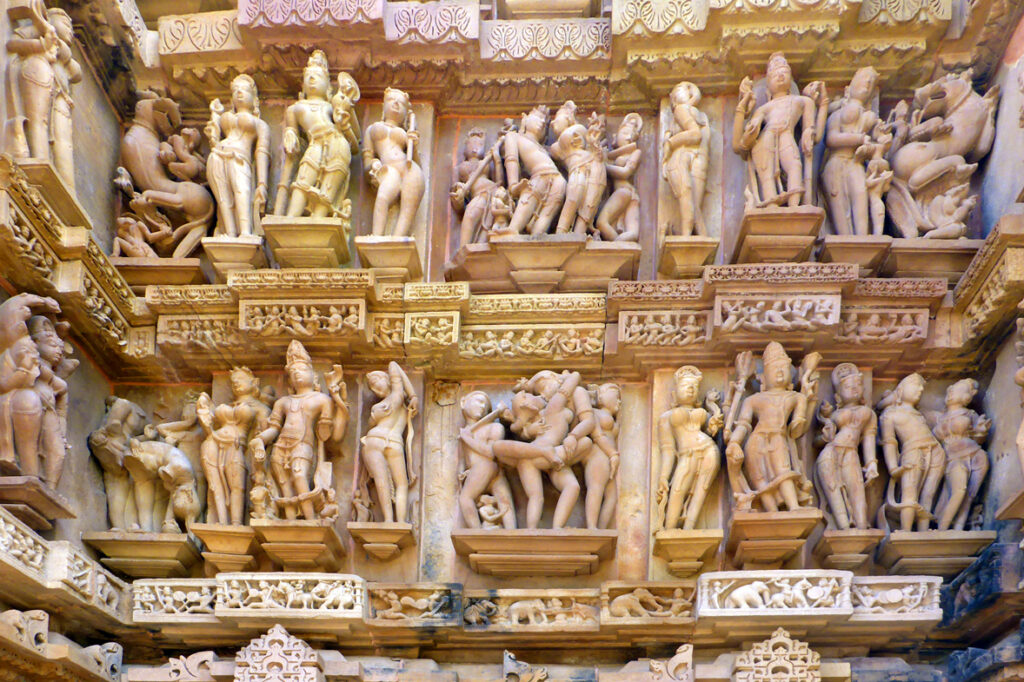
But a closer look at karma shows that it was originally a simple description of what happens, without any moral overlay. In Buddhism the doctrine became ‘dependent origination’: one thing leads to another. This arises, that arises. There is action (karma), but nobody acting. Agency but no agent. Karma transpires like patterns in clouds. Each pattern goes to make up the sky while also being unique, never-before-seen and never-to-be-repeated. There are no good or evil clouds. There are just clouds, and if you are a cloud, blowing with the wind feels like impulse.
We don’t choose our karma. We can’t change it, anymore than we can change our blood type, eye colour, resist the next in-breath or stop our heart from beating. We act in accordance with who we are and arrive at who we are because consciousness has puddled in a way that’s muddy enough to produce the illusion of continuity. That’s another way of saying ‘stagnant’.
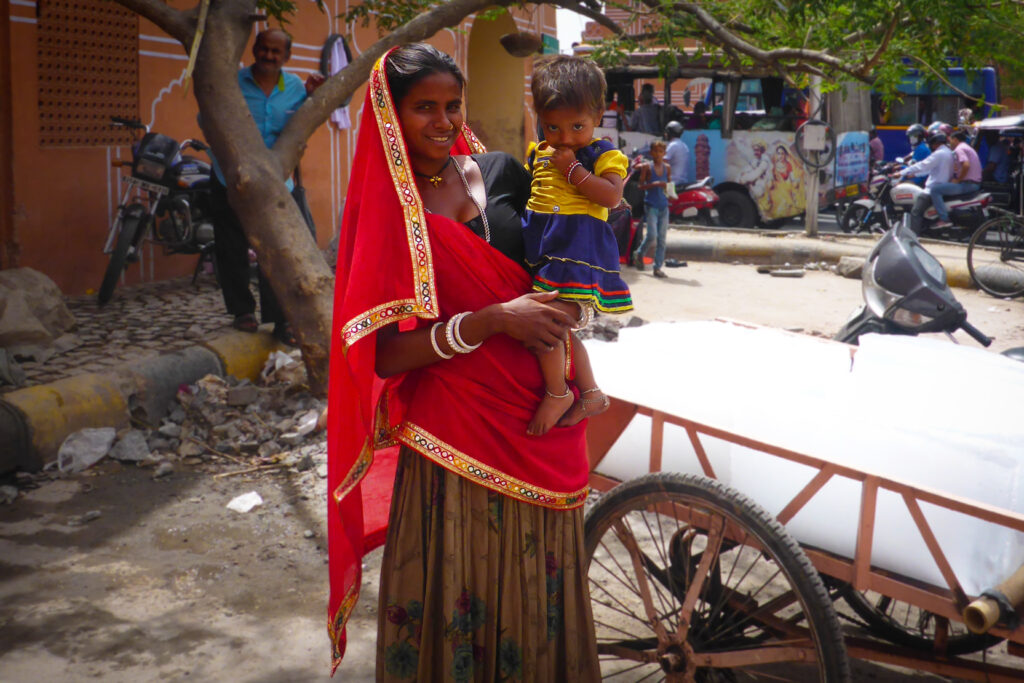
The contrast in India between extreme poverty and vibrancy of life is stark. Colour is everywhere. In the markets you wander among multicoloured carpets, textiles, handicrafts, pyramids of spices, the dizzyingly colourful saris worn by shoppers. Hems of richly embroidered, brocaded saris drag in the dust. Elephants too are painted. Along the roadside we passed a woman on foot, a heavy pot balanced on her head. In the intense heat and far from anywhere, her bearing remained steady and serene. She was wrapped in bright, elegant scarlet, all coated with dust.
A girl, veiled in pink beneath a canopy of matching pink bougainvillea flowers, seemed blissfully unaware of the startling effect it made.
We met a tuk-tuk driver who wore a bright new lavender-coloured kurta—the loose-fitting collarless tunic that’s widely worn. I touched my own shirt to signal admiration for his new garment. He indicated how the kurta was the same colour as the seat of his tuk-tuk, a piece of good luck that made him chuckle with laughter.
Without a word passed, the tuk-tuk driver had become for a few seconds our very good friend. We had a connection. But then we waved goodbye. He was gone. Such fugitive encounters happen continually in India. Joy and a warm heart everywhere rush to balance the unspoken desperation. Life is precarious, lived on the edge. You farewell everyone you meet with real concern for their future. Life dresses in different magical garments to what it wears in the west.
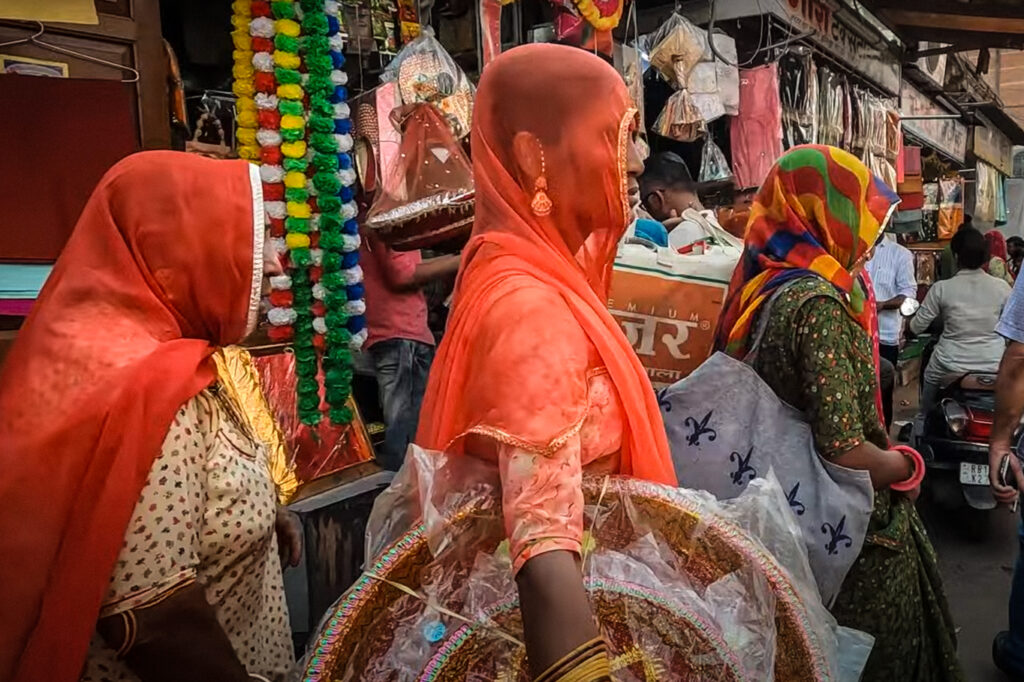

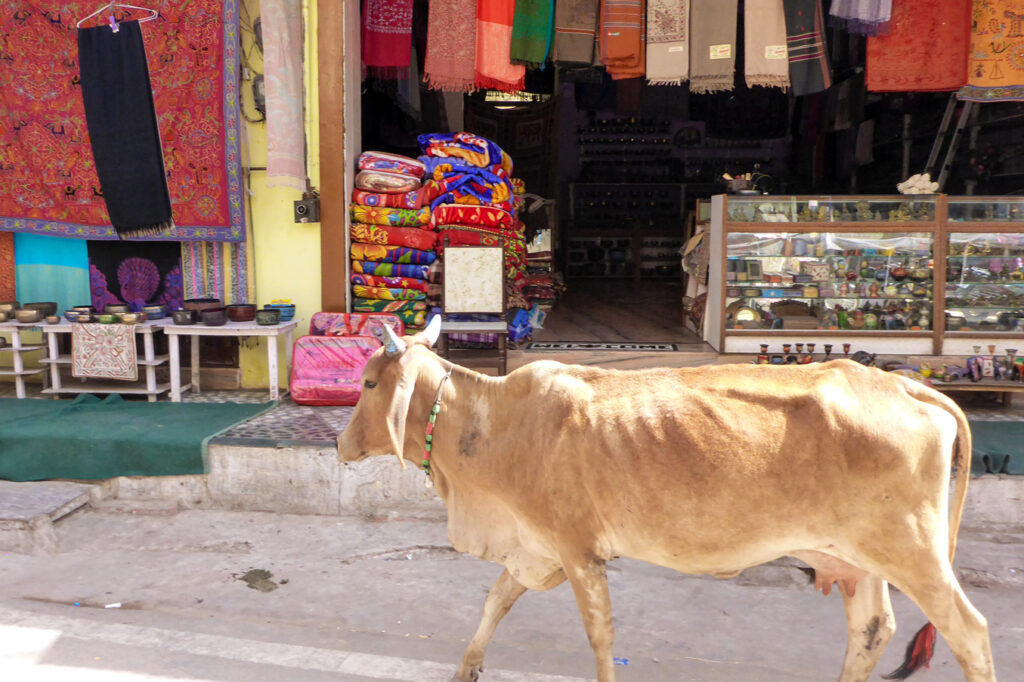
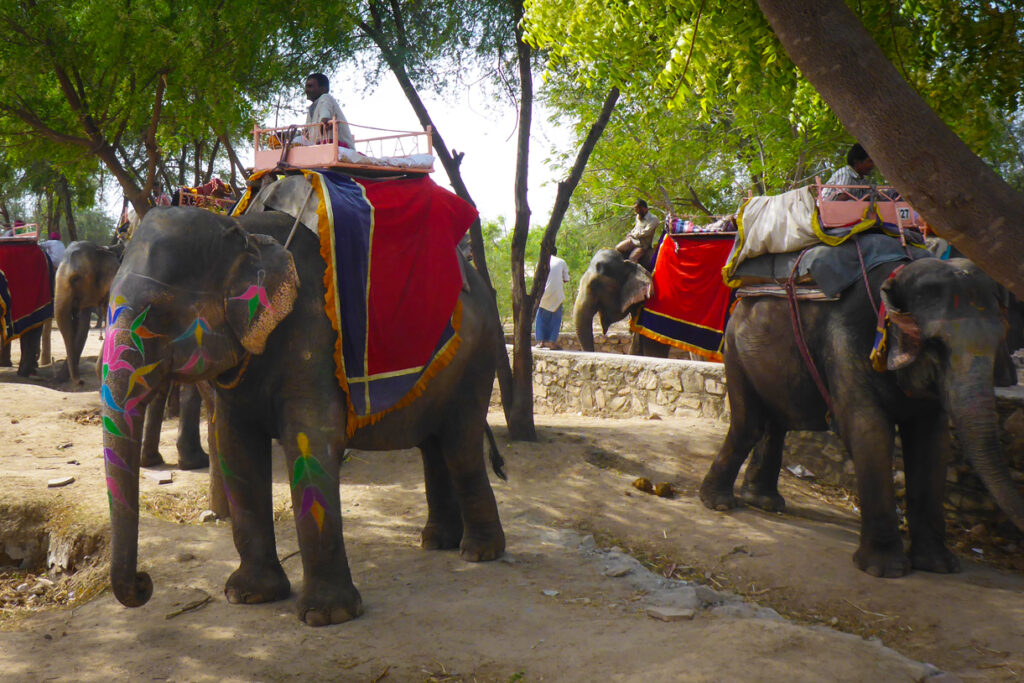
Belief in good luck, or shubh, which is closely tied to karma, touches all aspects of Indian life. People seek the blessings of Hindu gods such as Lakshmi, Ganesha, and Saraswati, for bringing fortune, prosperity, and protection. There are little shrines everywhere for such purpose.
On the road towards Jodhpur we stopped at the Om Banna Dham shrine, erected on the site where a boy known as Om Banna died in 1988 after his Royal Enfield Bullet motorcycle hit a tree. Legend has it that police removed the motorbike from the ditch in which it lay, but the bike mysteriously returned there. Removed a second time, drained of fuel and stored under lock and key, the bike yet again found its way back to the ditch. Now it forms the centrepiece of a shrine where devotees pray for safe travels and offer incense sticks, flowers, liquor, and wear red threads in reverence. Motorists who do not pay their respects as they pass are thought to court disaster.
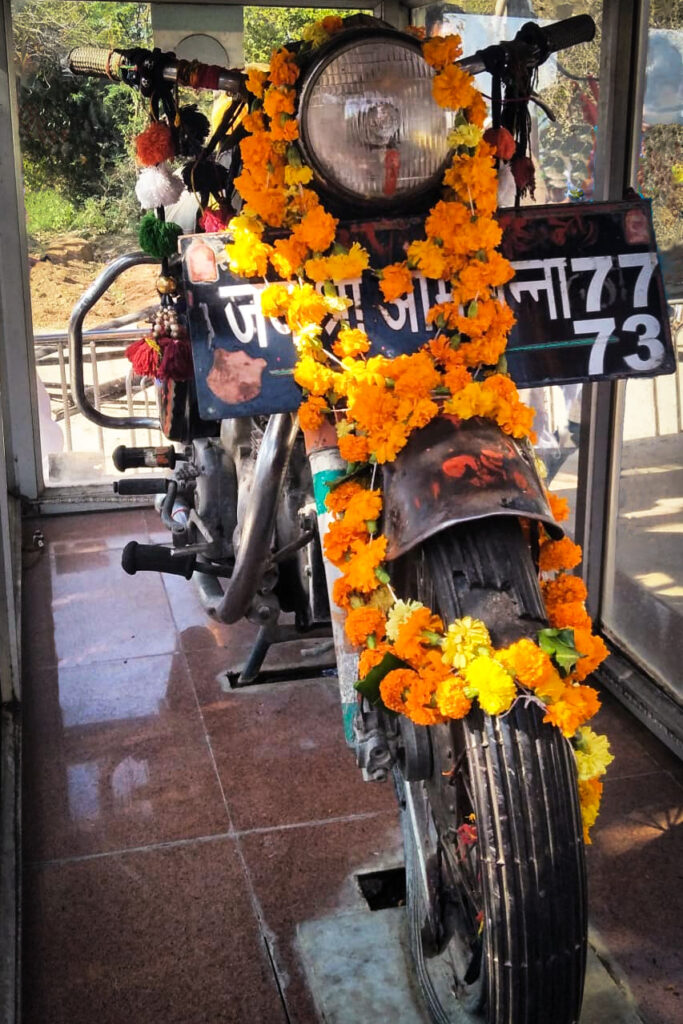

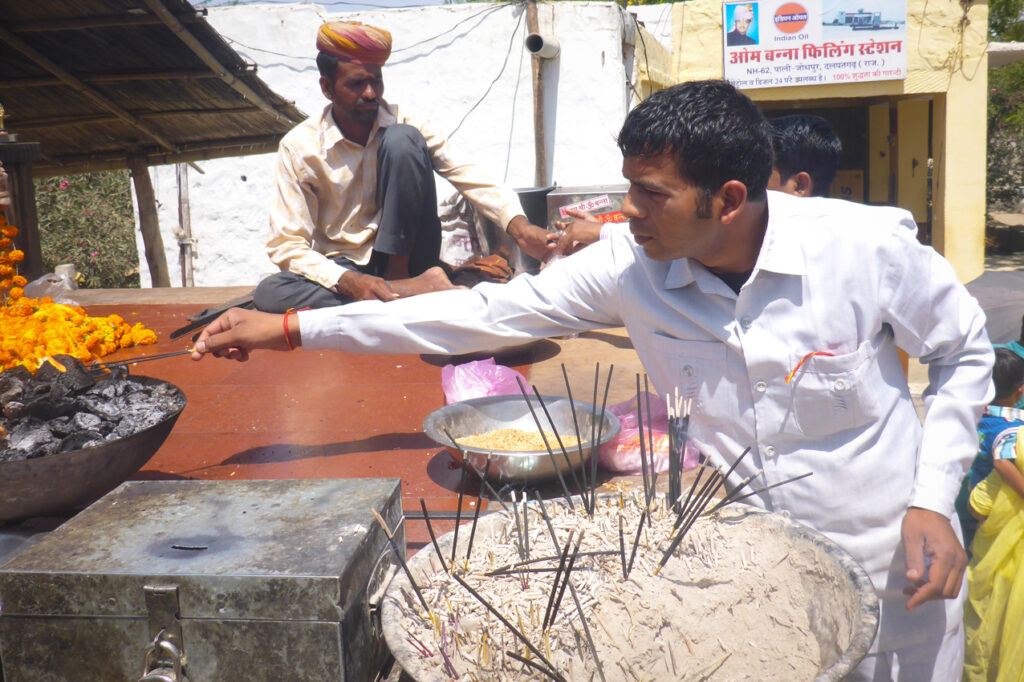
Ganesha is the god you see most of: an extraordinary creature, merry-faced and pot-bellied like Santa Claus, if Santa sported an elephant’s trunk not a beard and mice not reindeer pulled his sleigh. As elephants trample the forest path, so Ganesha removes obstacles. Unlike Santa, whose portliness is down to milk and cookies, Ganesha’s rotund belly is said to contain the whole cosmos, including the seven celestial and terrestrial realms and the seven oceans.
One story has him born from Shiva’s laughter. Another says that the goddess Parvati created a little boy from the turmeric or sandalwood paste she used in her bath. She told the boy to guard her bathroom door. When Lord Shiva came to the door, Ganesha blocked his path. Shiva lost his temper, raised his trident and sliced off Ganesha’s head. Parvati shrieked when she saw the headless boy. She begged Shiva to restore Ganesha to life. More than that, Parvati insisted Ganesha be made the most loved of all the gods. Shiva sulkily acquiesced and went off to find Ganesha a new head. By chance, the first creature he came across was an elephant. Ganesha is a chubby child god, wise beyond his years, who loves the colour red, eating sweet treats and smelling fresh flowers. His favourite sweet is modak, a coconut filled pastry, not unlike a Bounty bar.
In 1995, a Delhi man woke up from a dream that Ganesha was thirsty for milk. Immediately the man got up and rushed to the local temple. He told his dream to the priest, who suggested they try offering a statue of Ganesha a little milk on a spoon. Sure enough, to the men’s astonishment, the statue drank the milk. News of the miracle spread quickly, and by mid-morning, there were reports of thirsty statues right across India eagerly enjoying milk.

Indian cosmology, unlike the west, starts from the bit of reality a person can feel certain about, the bit directly experienced. That is, experience itself: the doubtless fact that appearances are happening, and seem to be happening to someone.
For Hindus, Brahman is ultimate reality. The someone to whom appearances seem to happen is the ātman or self. Brahman is existence expressing itself as everything that happens, and ātman is the witness of that expression. But ātman is not an entity engaged in doing witnessing or someone who undertakes the business of being a witness. It is simply witnessing taking place with no one doing it—consciousness as givenness. This presence dimension is indistinguishable from the universal existence itself. In other words, Brahman and ātman are Tweedledum and Tweedledee—identical.
Hardest to grasp is that ātman never makes an appearance in consciousness. As pure subject, it can’t be taken as an object on stage:
You cannot see the seer of seeing, the eternal vision that pervades ordinary vision. You cannot hear the hearer of hearing. You cannot think of the thinker of thinking. You cannot know the knower that pervades knowing. This witness is your self within all. Everything but this is perishable. (Brihadaranyaka Upanishad 3.4.2.)
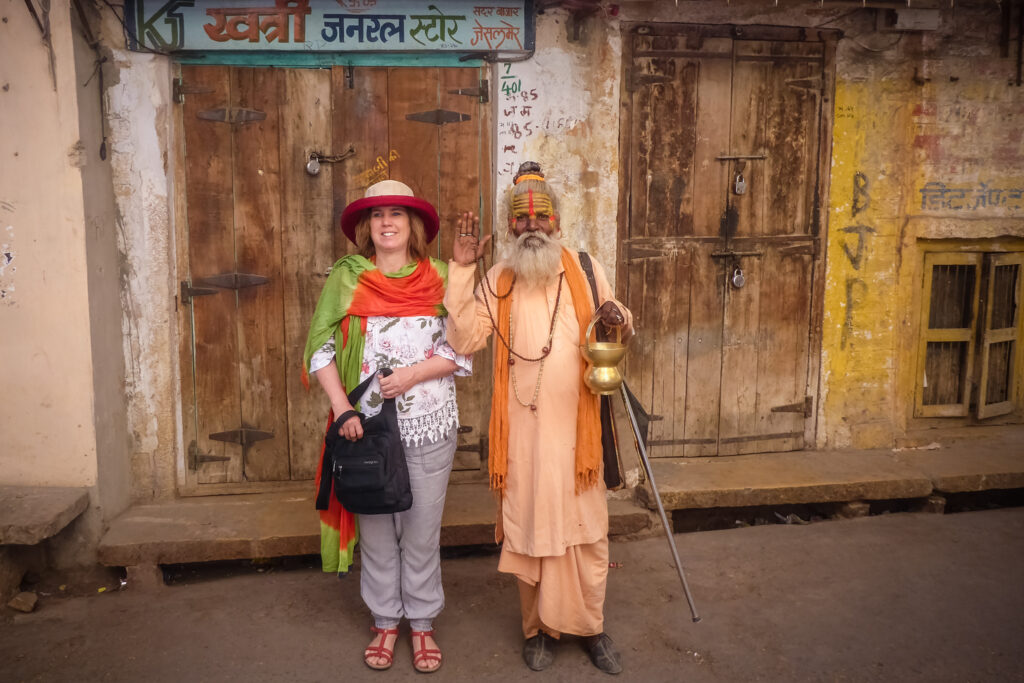
This witness is the eye that cannot see itself—the one, as William Blake puts it in a nutshell, we look through rather than with:
We are led to Believe a Lie
When we see not Thro the Eye
Which was Born in a Night to perish in a Night
When the Soul Slept in Beams of Light.
Consciousness is nothing else than the appearance of an all-enthralling here and now. The name in Sanskrit for this hypnotic allure is māyā. Opinions about the name māyā derive it variously from mā, meaning ‘to measure’, like the English words ‘meter’ and ‘matter’, man-, ‘to think’ or ‘imagine’ and may- meaning ‘mystify’ or ‘intoxicate’. The Sanksrit root mā also gives us ‘matrix’ and finally ‘mother’, associating māyā with goddesses like Lakshmi and Durga. Whatever the root of māyā, the word incorporates an inherent paradox between physical reality and imagination. Māyā is how consciousness thingifies—builds the world.
Buffeted by the karma winds, dressed in the trappings of one rebirth then another, the ātman explores the realms of māyā. But only the identities that ātman assumes are born and suffer, not the ātman itself, which is eternal, free and never incarnates. Everyone aboard the train of life is this in reality, ātman, whether we know it or not.
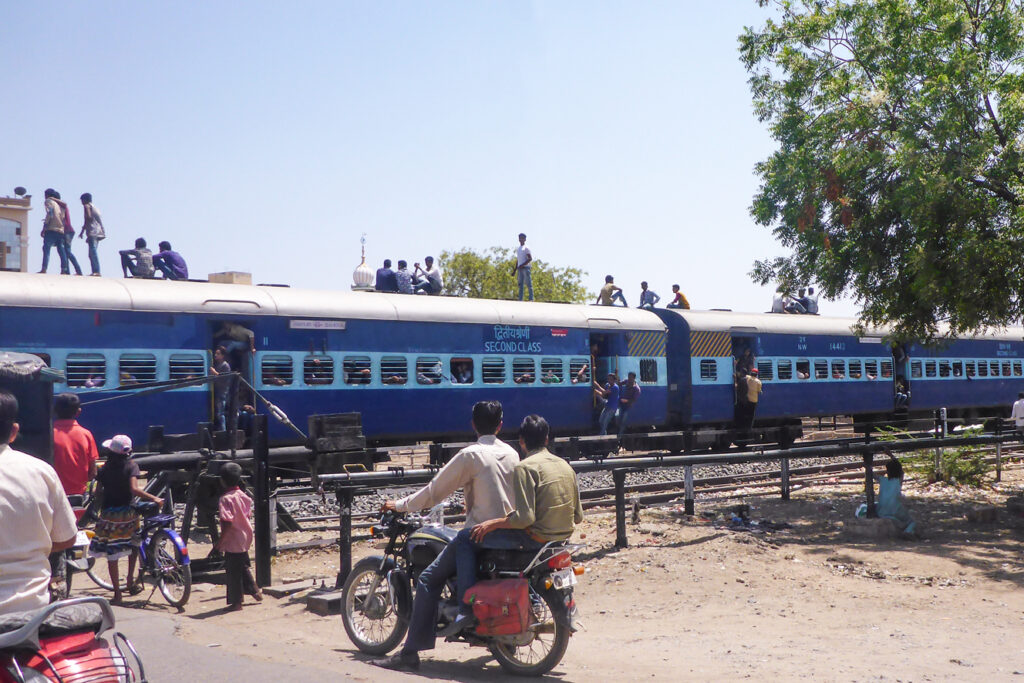
To realise the ātman’s true unborn nature is to achieve moksha—release. Liberation. What Buddhists call nirvana. In India those who set out to find moksha are known as sādhus. Sādhus leave their families to become homeless wanderers, dependent on the kindness of strangers. At Jaiselmer we met one sādhu, in faded orange robes, carrying a cane, a bag and a traditional kamandalu, or water pot, made of brass. Painted in ash on his forehead was a heavy red tilak, indicating the third eye—the eye that cannot see itself.
Sādhus disengage from society, often pronouncing themselves legally dead. Some go naked—sky-clad. Others wear orange to signal that their bodies are already in the cremation fire. Some live in forests or caves in the Himalayas. Around 327 BCE, Alexander the Great met Kalanos, a naked sādhu who later became Alexander’s advisor. The Greeks called sādhus ‘gymnosophists’, meaning ‘naked wise men’.
The sādhu we talked to complained about the terrible traffic and fumes. ‘What soul has quiet?’ he reflected. His working life we found out had been with the Revenue Service. We asked if he smoked much cannabis? His eyes twinkled and he smiled behind his woolly white beard. ‘Perhaps better for the spirit than food.’ He wished us a good life and departed with a blessing: ‘Om Namah Shivaya,’—’Salutations to Lord Shiva’.

